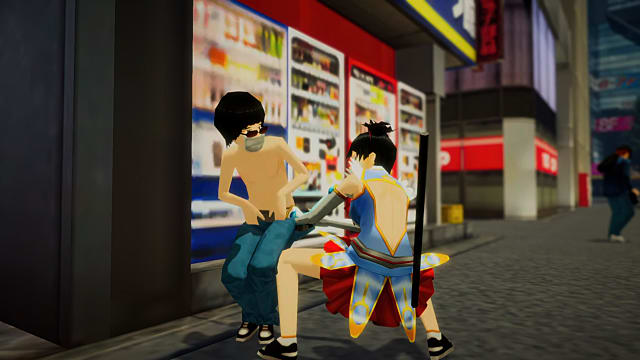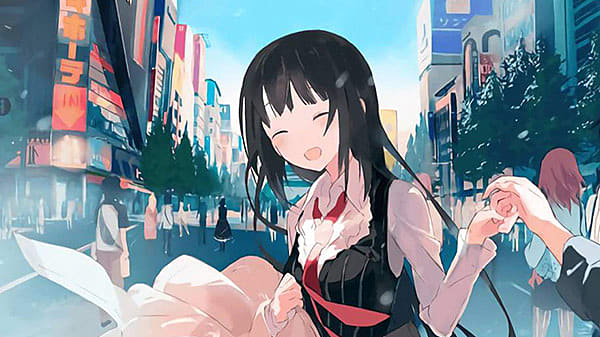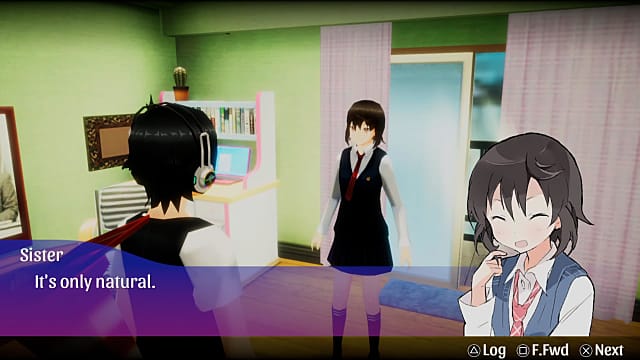The original Akiba’s Trip remains one of the greatest and most unique games of all time. It was both a social and a solo adventure that perfectly blended its two gameplay styles together, which in turn led to a game that was full of emotion and character; you actually felt like a part of the world that Akiba’s Trip was created in. Since that original release, however, Akiba’s Trip has fallen into a disappointing state, with the franchise becoming nothing more than a mere shadow of its former self.
It is hard to predict what the new year will bring, but one thing that is certain is that there will be plenty of surprises…
Akiba’s Trip: Hellbound & Debriefed isn’t the Akiba’s Trip we thought we were going to get. (A lot of that is because it’s not a sequel to Akiba’s Trip: Undead & Undressed, which is a sequel to Akiba’s Trip: Undead & Undressed.) It’s a remaster of Akiba’s Trip Plus, which was a remaster of Akiba’s Trip, which was a remake of Akiba’s Trip, which takes place in an alternate timeline where Akiba’s Trip never happened, and the only world this time is one where the original Akiba’s Trip never existed.
The Akiba’s Trip series is such a unique one. When Akiba’s Trip: Undead & Undressed came westward in 2014, I had no idea what to expect. It turned out to be a very shameless beat ’em game with stripping mechanics. More specifically, the main character explores the city of Akihabara and strips the clothes off of supernatural human enemies called Synthesizers, who are vulnerable to sunlight.
Akiba’s Trip: Hellbound & Debriefed essentially uses the same concept but with a different group of enemies. Debriefed is a remaster of the first game in the series that originally launched on the PlayStation Portable back in 2011, though it never made it outside of Japan.
Akiba’s Trip: Hellbound & Debriefed Guide — A Shadow of Its Former Self
The adversaries this time are vampiric creatures known as Shadow Souls. These evil creatures prey on Akihabara’s residents, sucking their souls and turning them into antisocial shut-ins. Tanaka, the main character, is assaulted right at the start of the game, and a mystery female rescues them by healing their wounds with her own body fluids.
Tanaka gains magical abilities as a result of this, but he also becomes susceptible to sunlight, much like the other Shadow Souls. Tanaka then joins NIRO in order to find out what the Shadow Souls’ ultimate goal is.
Those who’ve played Undead & Undressed (U&U) back in 2014 will certainly find themselves in familiar territory. While I’d say they’ll also enjoy Hellbound & Debriefed (H&D), it’s lacking in all of the many quality of life and gameplay improvements that U&U introduced seven years ago.
It’s almost as if the game was transferred from the PlayStation Portable to current platforms but nothing else was done to make it seem contemporary.

The lack of a lock-on system or any sort of manual targeting is an issue in U&U, and in H&D, the problem still hasn’t been solved. Combat feels as cumbersome as ever, with inconsistent, all-over-the-place hit detection.
In fact, it seems that gameplay has deteriorated in this area.
You may strike your opponents from three different angles: high, mid, and low, which correlate to different types of clothes, such as headgear, shirt, and trousers. As you strike your opponents, their clothing changes color, suggesting that you may attempt to remove a specific item of clothing from them.
In U&U, you can try to strip off an enemy’s clothes by mashing a specific button. If you are unsuccessful, your efforts still contribute to lowering your target’s clothing HP meter. However, in H&D, that HP meter doesn’t go down at all, which effectively means that if you fail to strip an enemy’s clothing, your effort goes to waste. Furthermore, in U&U, you can see how much HP your clothing has. But that feature is completely gone in H&D, so it’s harder to gauge your own condition.
By putting away your weapon and adjusting your clothes, these two animations allow you to recover your HP. But it’s a laborious process, as the animation leaves you wide open to enemy attacks. U&U does the exact same thing, except without having to put away a weapon, cutting the animation time in half.

The gameplay isn’t the only thing that’s gone backward here. U&U lets you open the Akihabara map at any time and go to a different location. In H&D, you have to actually run to the edge of the area to open up the map menu. Additionally, you can only save or change your clothes and equipment when the map is open, removing the change-at-any-time option found in U&U.
There are side quests in Hellbound & Debriefed as well, and they help expand Akihabara’s worldbuilding. These are the usual fare, with you fighting enemies or fetching some sort of item. You can always pull up the To-Do list in your menu to read what’s next in the main story or a side quest, but one aspect that is notably missing is an objective tracker. At this point, you can probably figure out that U&U had one…
It’s just baffling to see how many quality-of-life functions are missing here. In 2021, we’ve seen many remasters improve on their forebears, such as Nier Replicant and Shin Megami Tensei 3 HD Remaster. Unfortunately, Akiba’s Trip: Hellbound & Debriefed hasn’t overhauled combat — like the former — nor does it have an already solid combat foundation — like the latter.

But it isn’t to argue that the game is without merit.
XSEED usually provides quality localization, and H&D is no exception. The English voice acting is great, and it’s a noticeable step up from Undead & Undressed. The cast of characters is charming too, with my favorite being the main heroine, Rui Fumitsuki. XSEED’s stellar script really helps bring the main and supporting casts to life.
While the game’s 3D visuals aren’t very appealing, I like the clean 2D art style of the character portraits and the unique CG artwork that comes with each of the game’s endings. The music, especially the fight themes, may be very enjoyable.
Akiba’s Trip: Hellbound & Debriefed — The Bottom Line

Pros
- XSEED provided excellent localization and English voice dubbing.
- The 2D art style is sharp and clear, as is the CG wallpaper artwork.
- Music may be very enjoyable.
Cons
- The gameplay is much too clumsy.
- It lacks any gameplay or quality-of-life features added in the 2014 sequel.
- On a large screen, the graphics are unappealing.
I can really only recommend Akiba’s Trip: Hellbound & Debriefed to diehard fans of the series. It doesn’t have any gameplay or quality-of-life improvements that its 2014 sequel introduced, and as a result, it feels like a relic of the past. While there are some emotional moments in the game’s story and the cast of characters can be fun, the gameplay is a chore to get through. It’s just disappointing that this is such a barebones remaster.
[Note: XSEED provided the copy of Akiba’s Trip: Hellbound & Debriefed used for this review.]
Akiba’s Trip: Soul Hacker, the third game in the Akiba’s Trip series, came out in January 2018 for consoles and PC. The game is the sequel to Akiba’s Trip: Undead & Undressed, and picks up the same plot as the first game—a high school student named Riki Naoe who goes to Akihabara and runs into a girl named Aki and they fight demons.. Read more about akiba’s trip: hellbound & debriefed switch and let us know what you think.
Related Tags
This article broadly covered the following related topics:
- hellbound review
- hellbound game review
- hellbound movie review
- hellbound heart review
- the hellbound heart review

